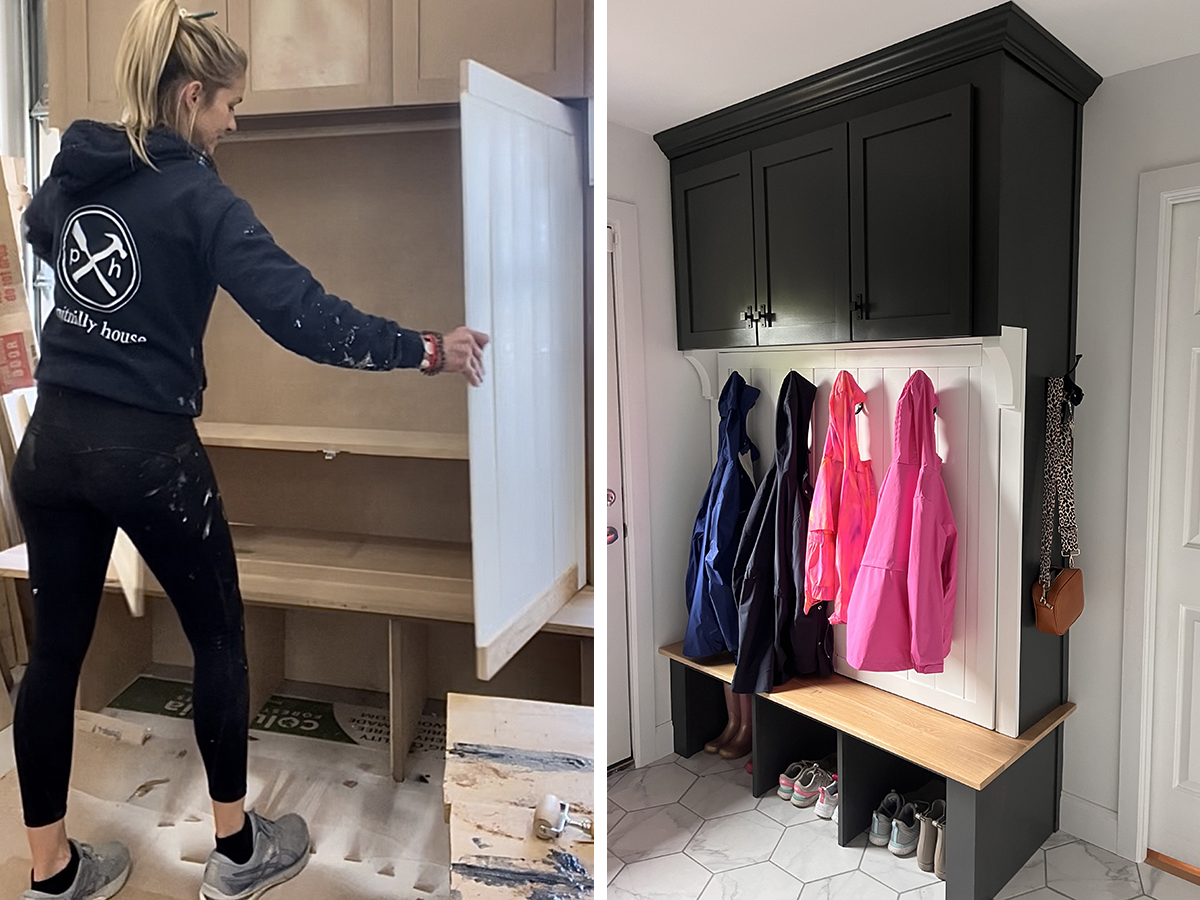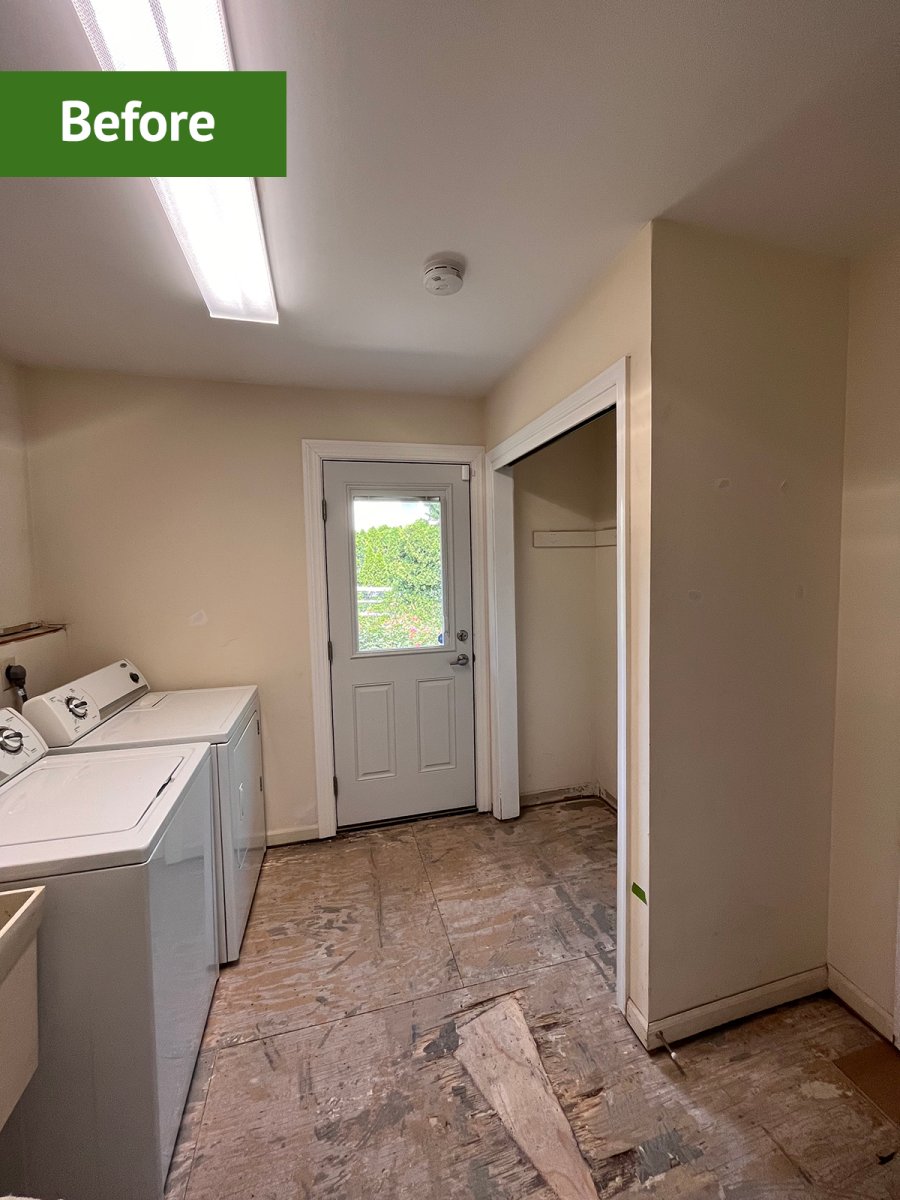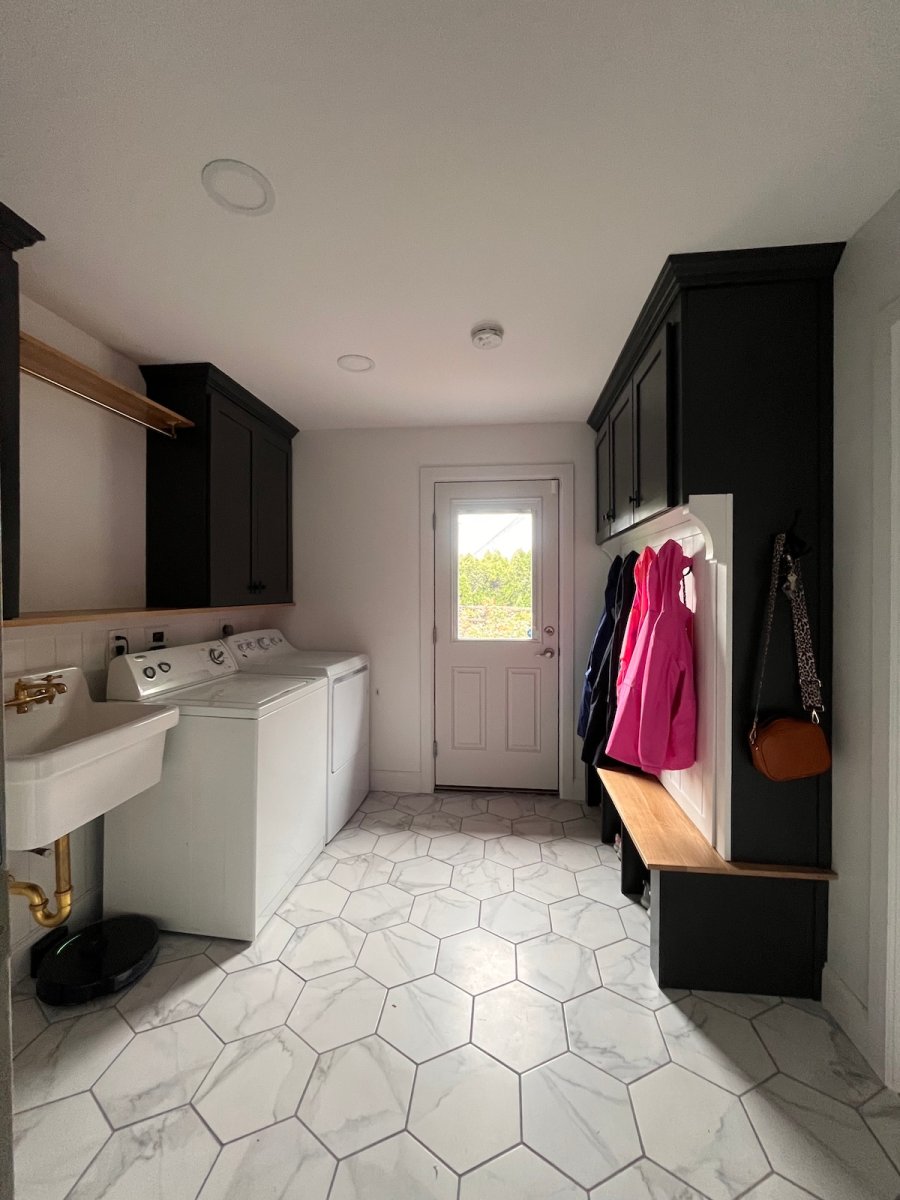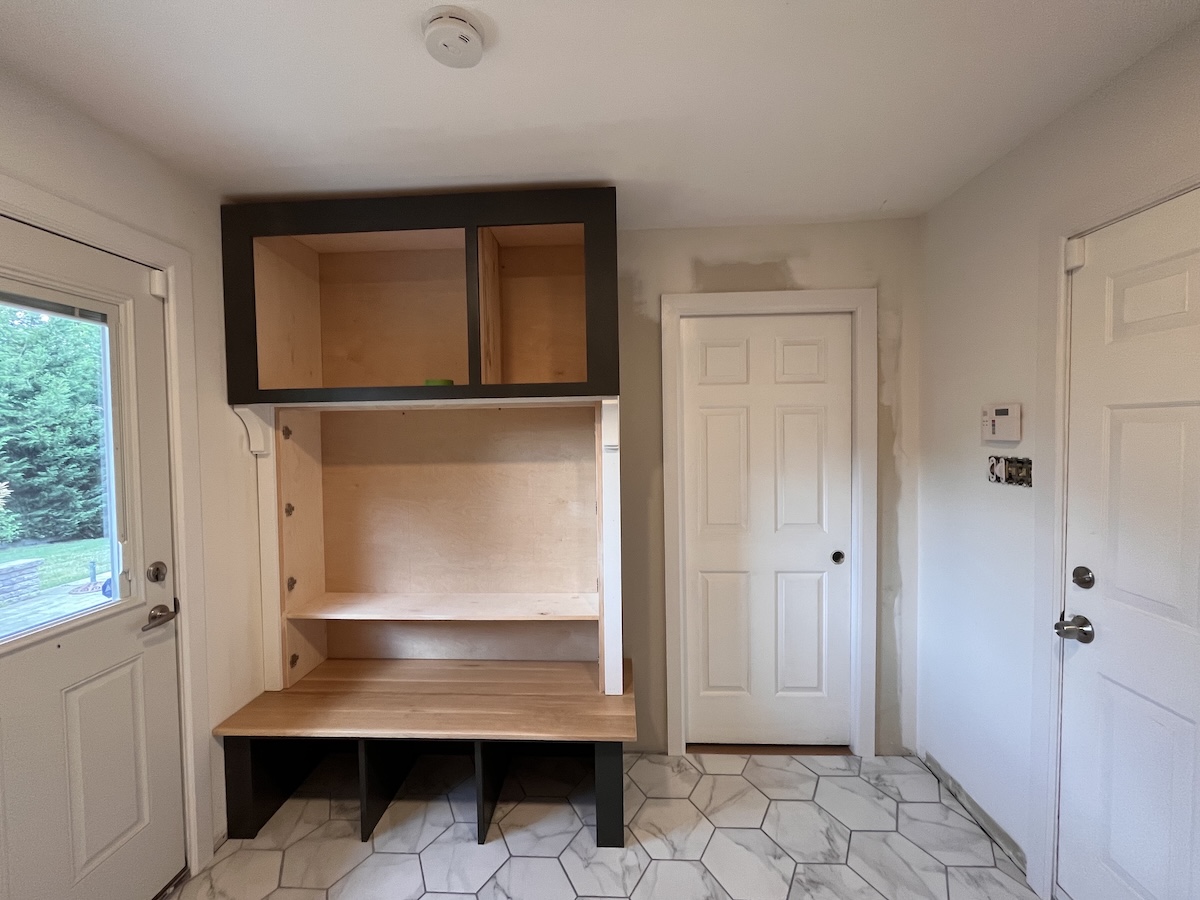

We may earn revenue from the products available on this page and participate in affiliate programs. Learn More ›
The drop zone is a fierce and relentless enemy of many home designers and parents. It’s that area near the doorway where there’s often a collection of backpacks, shoes, coats, sports equipment, and everything else that’s dropped by our favorite humans as they cross the threshold of our havens. As a designer, I’ve strived to be victorious at the drop zone for many years and have won a few battles, but I’ve yet to win the war. So when I saw Kiersten Brien’s hidden storage solution—that not only adds a layer of tuck-away possibilities but also hides some of the mess of a family life—I knew we needed to share her genius with other home enthusiasts.
“Hidden, dual-purpose things have always been a thing I have been drawn to,” says Brien, designer and founder of interior design firm Pitmilly House and manager of the popular @pitmilly_house Instagram account. “Since building this and having people see it, I now have the chance to try new things and really dive into my imagination.”
And we are all lucky to witness her imagination at work. Here’s a closer look at how she created this project for a client and some key tips that can help make your hidden entryway storage goals a reality.

Evaluate the potential of a space to meet your goals.
Don’t ever assume that your home doesn’t have potential for hidden storage. There are usually possibilities in most homes. Maybe you don’t have a space like this 1980s-era laundry room, but you may have a nook under the stairs that’s waiting to be used, space between a few studs for shelves or built-in cabinets, or an area above a ceiling’s drywall for a storage hatch between joists.
“When I went to see the space I asked them not to clean and to please leave everything in the room where it usually lies,” says Brien. “The room was a laundry room with a sliding door coat closet. They really wanted to turn it into a mudroom/laundry room that would catch the kids’ shoes, coats, and backpacks.” And if they had cleaned up the space, Brien wouldn’t be able to accommodate the design for all of the items that needed to find a home when the storage solutions were complete. “I always say that your collection of items informs the design scope required for a successful project,” she adds.
“They really wanted a clean, organized space. That’s when I knew a hidden dual-purpose storage space was perfect for them.” says Brien. “I will always have the client in mind and what they need. At the end of the day, they will be the ones who will see and use it every day.”

Break down the project into smaller chunks.
When there’s a project that consumes an entire room like this drop zone update, there’s a chance that those overwhelmed feelings of ‘Where do I start?’ might emerge. Just like everything else in life, when a project seems daunting and too big to wrap your brain around, chunk it out into smaller pieces and treat each one as its own project with a schedule. It will be easier to manage.
“Always break down your project. It’s a lot simpler than it looks,” says Brien. “This build is three different structures and is very simple. The bottom is a cubby bench. The middle is a shallow box cabinet with European hinges. Lastly, the top is a custom row of upper cabinets.” European hinges are concealed, two-part hinges that mount inside the cabinet door and the cabinet, providing a clean overall look.

Think about the entire space.
No home improvement project is an island. Well, unless your goals are to have an amazing TikTok or Instagram account and the everyday existence of home life is less of a priority. But, we’re living out here in the real world where the storage cabinet Brien created is part of a bigger space, the laundry room. “I wanted to tie this project in across the room,” says Brien. “I ran a white vertical shiplap high chair rail behind the washer and dryer with charcoal cabinets, white oak shelves, and brass accents.”
For this project, design and functionality were both top of mind, according to Brien. “The shiplap made for an incredible hidden door. The white oak bench top and shelves were milled from a tree that was down the road from my shop and the dark grey color was a color match from an old building that I had done work in. The brass accents helped warm the room and allowed me to use hooks as a layer in front of the coat closet.”
When designing your own project, bear in mind that the room you’re working in should feel like it “belongs” in the overall design of your home. The trim used in your new project, for example, should carry through or match the trim in the next space. The paint colors will either complement or clash with the adjoining space’s colors. The flooring needs a transition strip if you are only updating this space. Thinking about how the current project relates to the other aspects of the home is important.
Get the right tools for the job.
If you want a successful project, it’s essential to use the right tools. Just because an oscillating multitool can cut sheet goods doesn’t mean it’s the right tool. Unless you’ve been diligently practicing for a long time, it’s best to choose a track saw or table saw for cutting sheet goods. Keep in mind that round blades make straight cuts.
For this project, “I used a mix of my shop tools,” says Brien. “But before I had my shop, I am confident to say that if you have a table saw, track saw, or even a circular saw, you can do this.” Check out our guides to buying tools to find the right ones for your home projects.

Build a prototype.
Drawings are an inexpensive way to figure out the size, shape, and details of a project. Whether it’s on paper or in a computer, a drawing can offer an opportunity to communicate with your clients or loved ones about your ideas and it allows them an opportunity to share their opinions. It’s hard to react to the ideas that are just swimming in your head.
But after your drawings are set, there’s the real world. It’s a well-known architect notation that says: Verify in field (VIF). The reason is that the real world always delivers surprises, no matter how well you plan, measure, and detail your drawings. Consider making a prototype or a full-scale detail of a project to see how it actually works in the space.
“Always build a prototype and save yourself a headache and building supplies,” says Brien. “I did make protos of this, and through trial and error, tweaked it.

Give it a try.
If you’ve been thinking about starting a project but are hesitant, Brien says: “Yes, just go for it. You will never learn if you don’t try.” However, I need to add: Start small. Don’t set out to build a deck or remodel a bathroom this weekend if you’ve never used power tools. Maybe start with building a planter, or painting the inside of the linen closet. Choose projects that can be set aside and aren’t disruptive to the household so you can spend time methodically developing your skills and confidence.
And be sure that you’ve allowed yourself more than enough time and budget in case you need it. It’s best to not be rushed and under financial pressure when trying something new. And never start a project that needs to be done quickly for a major deadline like hosting a wedding or family holiday party.
